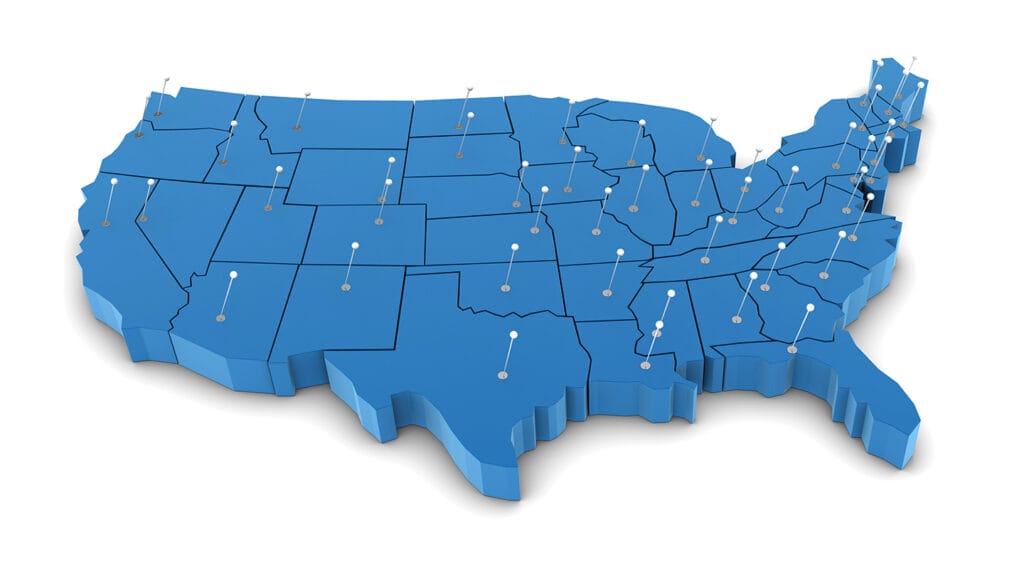
Presenting detailed arguments about the impact of a 2.2% Medicare payment cut on the home health industry, providers asked the Centers for Medicare & Medicaid Services to not implement temporary or permanent behavioral adjustments next year.
“We strongly recommend that CMS … withhold any such adjustments in 2024 to provide the opportunity for a full and deep review of the direction of the home health benefit, its impact on access to care and options to preserve a longstanding benefit …,” the National Association for Home Care & Hospice said in its 36 pages of comments to CMS.
All the major home care associations and many individual providers and supporting firms weighed in on the controversial proposed rule. The agency received a total of 946 comments, according to the agency. Comments were due to the agency on Tuesday.
At issue is the total 2.2% Medicare payment reduction proposed for 2024. This includes a 5.653% permanent cut to Medicare’s home health agency rates. The latter follows a 3.925% permanent reduction put in place for 2023.
Providers argued that this loss in Medicare funds hurts access to home health. One reason: Agencies must reject cases due to staffing shortages, and the industry already is struggling with this problem thanks to the COVID-19 pandemic. LeadingAge in its comments cited a CarePort survey that found that there was a 40% increase in home health agency referral rejection rates between its 2022 and 2023 reports. And Homecare Homebase reported that the percentage of referral rejections due to the staffing shortage rose from 3.8% at the beginning of 2020 (when the Patient-Driven Groupings Model payment system was implemented) to 12.1% at the beginning of 2023.
“The staffing crisis is a perfect storm — the competition for staff has never been stiffer due to the pandemic,” LeadingAge said in its comments. “Home health agencies had difficulty competing for staff with hospitals, insurance companies and other opportunities prior to the pandemic; that competition is even fiercer now. The continued downward pressure on payment could not come at a worse moment — the result is going to be decreased access to care, especially for those who need it most.”
The Partnership for Quality Home Healthcare, which represents home health agencies, echoed these concerns in its comments.
“CMS must assess the on-the-ground realities for patients, clinicians and HHAs and finalize a 2024 HH PPS that allows the sector to stabilize, rather than perpetuating a downward spiral,” the Partnership said. “Finalizing the rule as proposed will continue the demise of the home health benefit, to the detriment of beneficiaries, particularly the most vulnerable.”
Rate cuts over the years have resulted in home health agency closures, reduced service areas, reduced admissions and reduced scope of services, NAHC said. Home health agencies with current negative Medicare margins would face significant financial difficulties in absorbing the proposed additional 5.653% rate cut for 2024. Some 52.7% of freestanding home health agencies would be “underwater” with overall margins below 0% assuming no change in costs compared to 2022, according to NAHC.
Providers also pointed out that Medicare helps to subsidize programs that don’t pay as handsomely, namely Medicaid and Medicare Advantage.
“Changing payment rates in traditional Medicare has a ripple effect on the entire patient population of an HHA,” NAHC said. “That is particularly the case when the other payers are highly unlikely to step up and improve their payment rates as we have here in home health with Medicare Advantage and Medicaid, both having rate setting power that is sanctioned by CMS.”
Home care tech firm Axxess, which submitted comments, agreed with this point. Ongoing reimbursement cuts to Medicare HHAs is “shortsighted,” it said.
“HHAs have no leverage with MA and Medicaid to negotiate better payment rates,” it said. “CMS must consider the overall HHA payer mix when proposing payment adjustments, particularly inadequate reimbursement by MA and Medicaid.”
WellSky, a technology company that says it serves 1 in 3 home care providers, talked about the negative impact Medicare cuts would have on the treatment of higher-acuity patients in the home.
“If the proposed rule and associated payment cuts are finalized, many of these higher-acuity patients will be forced into higher cost settings, consuming what would be potential cost-savings for CMS,” WellSky said. “Home health has advanced its ability to care for increasingly challenging clinical needs yet requires aligned payment to allow for continued and expanded cost-effective care at home.”
Hospice Special Focus Program
Home health payment cuts were not the only topic of providers’ criticism in comments to CMS. Hospice providers also expressed their concerns about the methodology behind the Special Focus Program, which was outlined in the proposed home health rule. In particular, they voiced objection to the algorithm used to determine which hospices would be the target of the SFP. They reiterated many of their comments from a previous letter to CMS about the SFP. In particular, they cited the algorithm’s bias against large providers and the backlog of surveys, which are a component of the algorithm. Some 35% of hospices have not been surveyed in the last 36 months, NAHC said. That raises doubts about surveyors’ capacity to handle additional SFP surveys.
They also mentioned reservations about the Hospice Care Index and Consumer Assessment of Healthcare Providers and Systems (CAHPS) surveys. Only 49.3% of eligible hospices (2,929 of the 5,943 SFP- eligible hospices) report the four CAHPS Hospice Survey measures that are part of the proposed algorithm, and only 33% of hospices have enough data to have a CAHPS Hospice Survey Star Rating.
For these reasons, provider organizations asked CMS to work with the Technical Expert Panel (TEP) to improve the SFP methodology prior to its planned implementation date on Jan. 1, 2024. They also requested that CMS and the TEP implement a nationwide pilot of the updated algorithm with all hospices, during which SFP results will not be publicly posted.
Editor’s note: The story has been updated with information regarding the number of comments submitted to CMS and information from firm Axxess.


